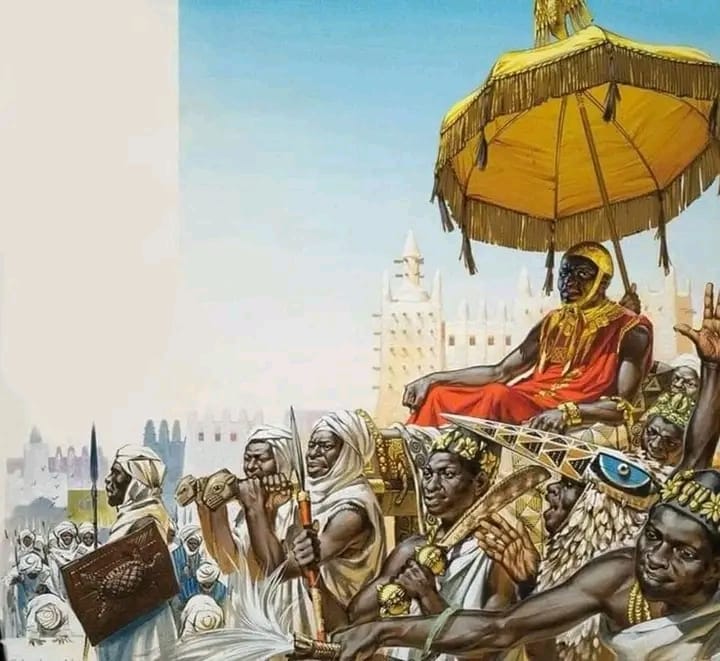The Mali Empire, which flourished from the 13th to the 17th century, was a powerful West African kingdom that left an indelible mark on the region’s history.
Established by the legendary King Sundiata Keita, also known as the “Lion King,” the empire united several smaller Malinké kingdoms near the Upper Niger River and expanded its territory, influence, and culture over the course of four centuries.
One of the most iconic rulers of the Mali Empire was Mansa Musa I, who reigned from 1307 to 1332. During his reign, the empire reached its peak in terms of territory controlled, cultural florescence, and wealth.
Mansa Musa’s pilgrimage to Mecca in 1324, during which he spent and gave away vast amounts of gold, earned him fame throughout the Islamic world and established Mali as a major center of trade and scholarship.
READ ALSO: The Rise and Fall of the Mighty Songhai Empire
The Mali Empire’s wealth was largely derived from its control of important trade routes that connected West Africa with North Africa and the Mediterranean world. Gold, salt, and other commodities were traded along these routes, making the empire one of the wealthiest in the world at the time. The empire also benefited from an abundance of gold dust and salt deposits within its borders.
The Mali Empire was known for its vibrant culture and scholarship. The city of Timbuktu, located in the heart of the empire, became a major center of Islamic scholarship and learning, and was home to many universities and madrasas. The empire also developed a rich tradition of oral storytelling, with specialized storytellers known as griots recounting legends and community histories.
The Mali Empire’s art and architecture also left a lasting legacy. The famous Great Mosque of Djenné, built during the empire’s height, continues to inspire artists and architects in the region today. Pottery, sculpture, and other forms of art were also produced, with subjects often including human figures, especially bearded warriors riding horses.
Despite its decline in the 15th century due to internal conflicts, attacks from neighboring states, and the collapse of the trans-Saharan trade network, the Mali Empire’s legacy can still be seen in the cultural traditions and architecture of West Africa.
The Mandinka language, spoken by the empire’s ruling class, is still spoken by millions of people in the region today.
The Mali Empire was a remarkable kingdom that left a lasting impact on West Africa. Its wealth, culture, and Islamic influence continue to be celebrated and studied by historians and scholars around the world.


freoaz